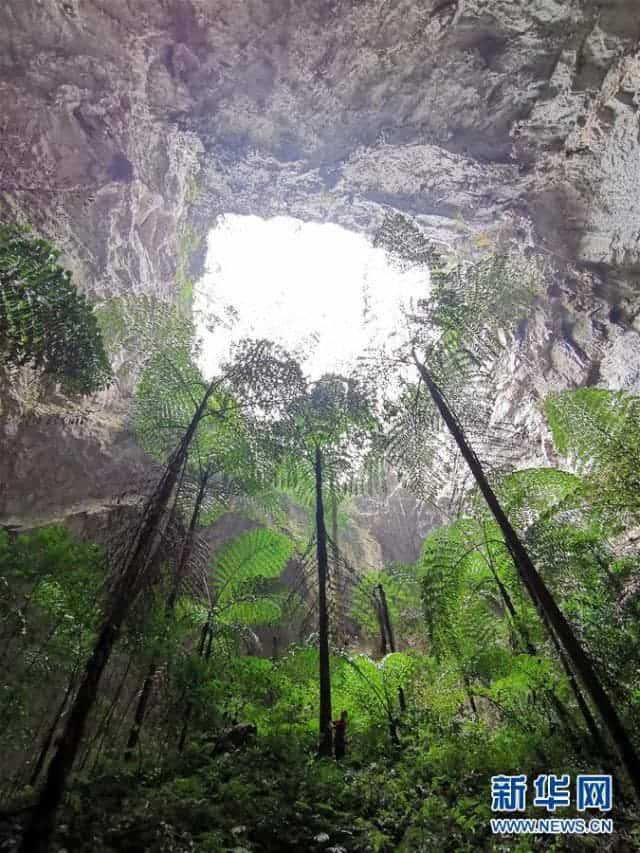A team of cave explorers and speleologists have discovered a giant cluster of karst sinkholes in South China’s Guangxi Zhuang autonomous region. According to the team, which includes scientists from China, the UK, and France, 19 new sinkholes have been discovered, among them an unbelievable giant sinkhole with lush vegetation and even trees growing inside, their canopies extending towards the light above.
The giant sinkhole, located near Ping’e village in Leye County, is nearly 190 meters (630 feet) deep and extends hundreds of meters in length and width — enough to engulf a Manhattan block, skyscrapers and all.
In Mandarin, these enormous holes in the ground are known as “tiankeng,” or “heavenly pits”. In this case, the name really is very fitting as scientists found a veritable hidden Garden of Eden after they rappelled to the bottom. Here, they found a well-preserved ancient forest, with some trees as tall as 40 meters (130 feet). It is very likely there are many species of plants and animals to be found there, though it is too early to tell.

One thing’s for sure: biologists are going to have a field day in this sinkhole — that’s if they’re fit enough to brave the arduous journey to the very bottom. The original team of explorers who made the discovery in May abseiled down more than 100 meters (330 meters) and trekked several hours to reach the pit’s bottom
This stunning new ecosystem is part of a series of sinkholes that are interconnected through an underground river and cave system, making them the largest cluster ever found south of the Tropic of Cancer, according to Zhang Yuanhai, a member of the team organized by the Institute of Karst Geology of China Geological Survey.
In total, there are 30 sinkholes in Leye County alone, which would be staggering were it not for the region’s geology and topography, world-famous for its karst formations. Karst refers to any land made up of limestone, also known as chalk or calcium carbonate, which is a soft rock that dissolves in water.
Karst topography is perfect for forming sinkholes, and it’s easy to see why. As rainwater seeps into the soft rock, it picks up carbon dioxide becoming slightly acidic, slowly eroding it away. Over time, if enough cracks and small tunnels form into the bedrock, the roof can collapse, opening up a sinkhole ranging in size from a few meters to gargantuan proportions as seen recently in China.
According to Yuanhai, there are three big caves in the wall of the newly found sinkhole, which are presumed to be the remains from the early development of the sinkhole. As such, these recent discoveries could help scientists better understand how sinkholes form in the first place.
“Some of the sinkholes are formed at a plateau 1,000 meters above sea level, and the others as a chain developed along underground rivers. The founding will be of significance for the theory of sinkholes evolution,” said Jiang Zhongcheng, head of the institute.






